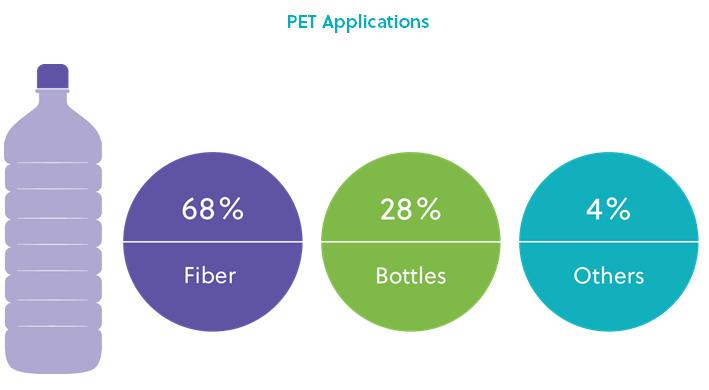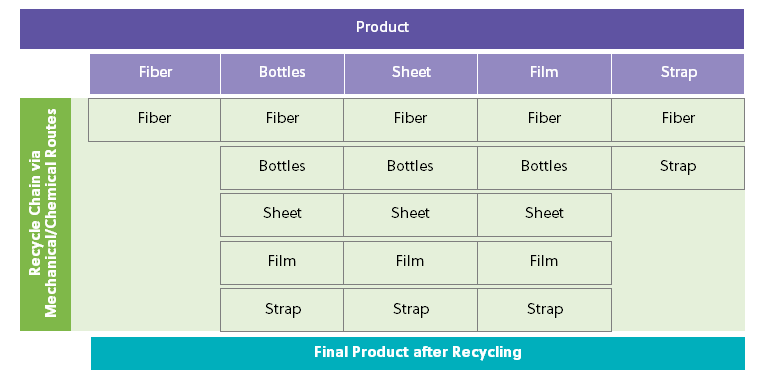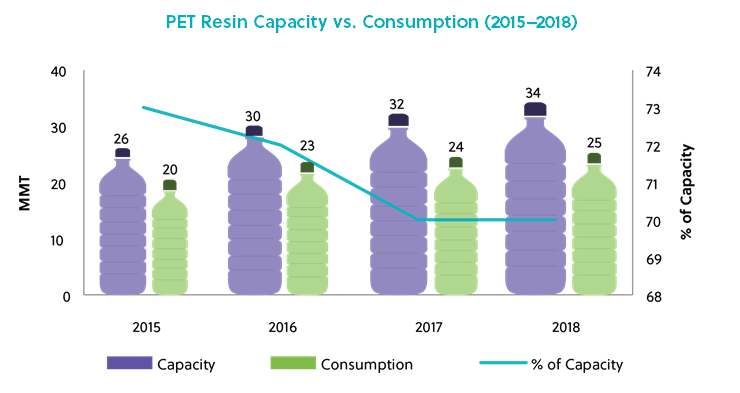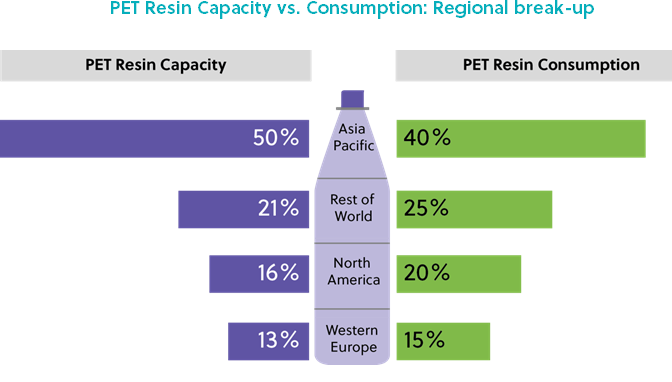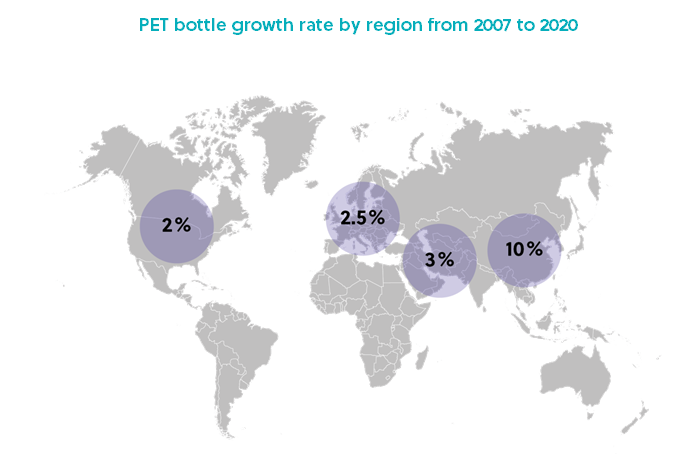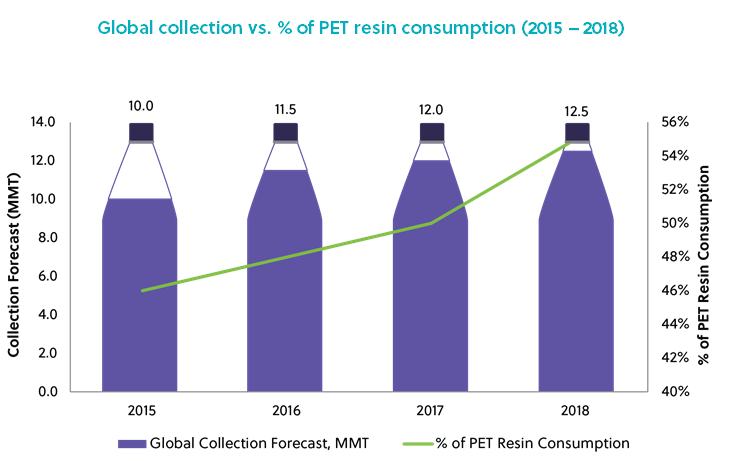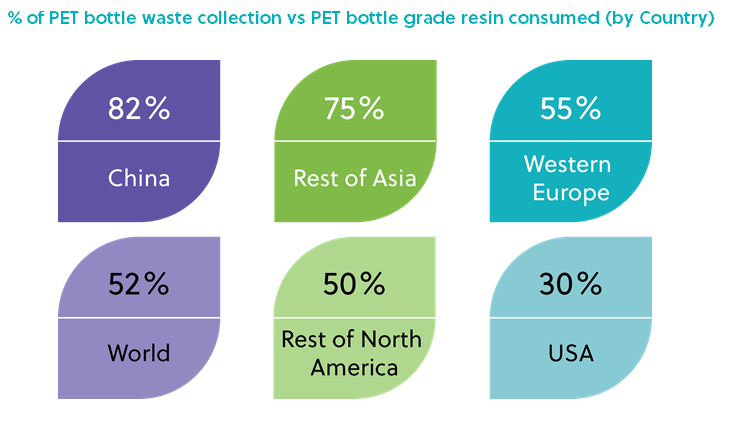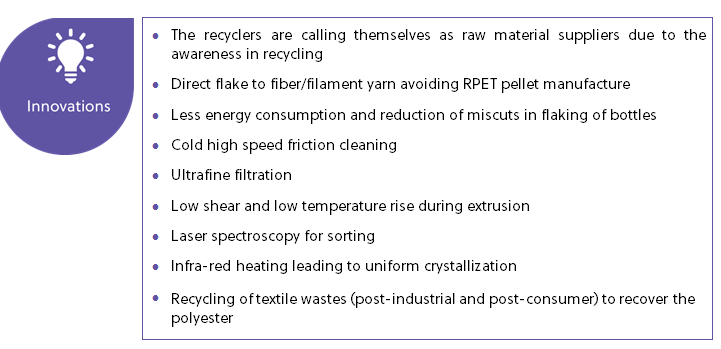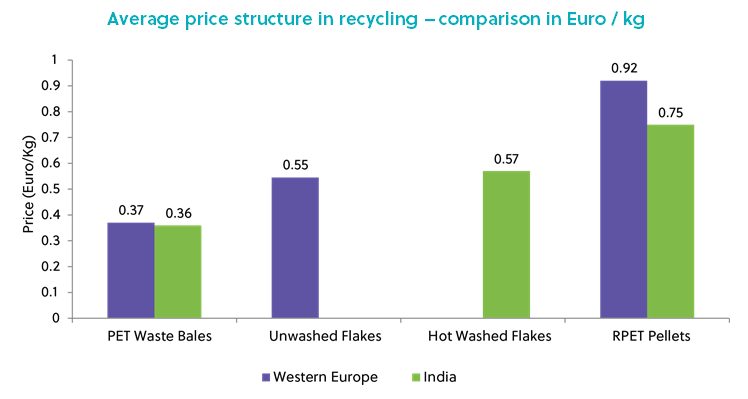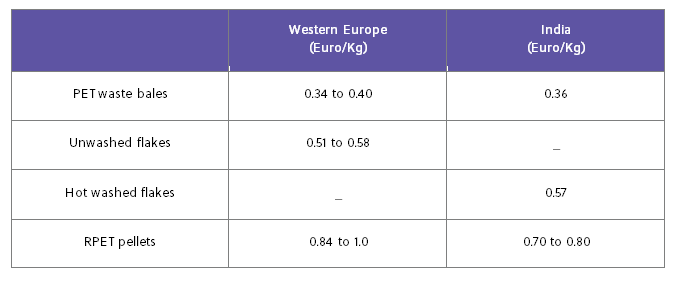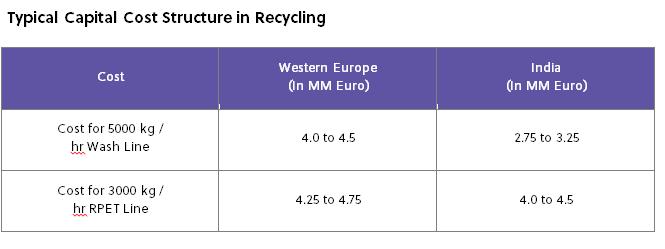
PET recycling - a means to save the planet

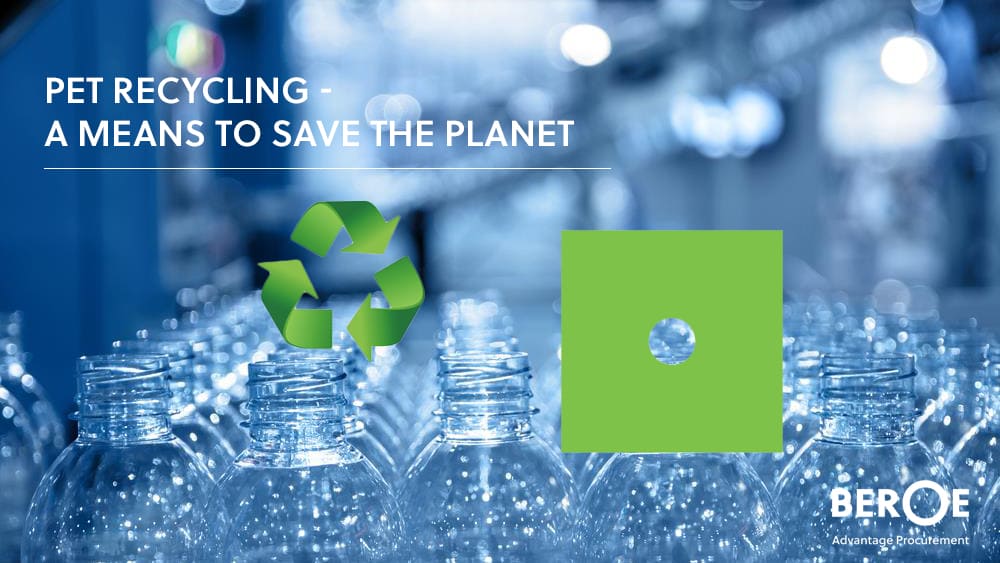
Introduction
Polyethylene terephthalate (PET) is the most widely used plastic resin in consumer segments such as textiles and food. It has become common in the textiles industry to blend polyester with natural and man-made fiber such as cotton. In food segment too, the usage of 100 percent PET for packing, storage and distribution of all types of food (liquid and solid) has become a norm.
The world capacity for polyester production is about 59 to 65 million MT/year with most of it going into fiber applications and bottles.
A huge quantity of PET gets discarded every year posing a serious threat to the environment; if it is non-biodegradable. However, the impact could be brought down by recycling. Interestingly, PET is a kind of plastic that is most commonly recycled.
Recycling Possibilities
Recycling of post-industrial fiber waste and post-consumer bottles are well developed and there are many recycling plants in operation.
Overview of PET Resin/Bottle
The PET resin capacity is likely to increase by around 32-34 percent from 26 MMT in 2015 to 34 MMT in 2018.
Asia remains the largest producer as well as consumer of PET resin. With the standard of living improving in the region, the growth rate of PET bottles is also likely to be high with a CAGR of 10 percent from 2007 to 2020.
Theoretically, the amount of bottles available for recycling should be in line with the growth trend. However, the actual picture is different and is driven by the waste collection rate.
PET bottle waste flow in recycling (2014-2015) in MMT
|
Region |
Collection |
Trade |
Process Loss |
Flakes |
Usage % |
||
|
Fiber |
Blow Molding |
Others |
|||||
|
Global |
9.70 |
4.6 |
1.6 |
7.80 |
70 |
12 |
18 |
|
China |
2.97 |
1.97 |
1.0 |
3.88 |
94 |
2.5 |
3 |
|
Western Europe |
1.68 |
(0.125) |
0.4 |
1.15 |
27 |
28 |
43 |
Current Scenario
- China is the leading PET recycler in the world with about 94 percent going into production of fiber and filament. Examples include coarse POY, dope dyed staple and POY, and fiber fill.
- In China, B2B needs government approval, and recycling back to food grade bottles is hardly 1 percent of total recycling; though it is expected to increase.
- Capacity utilization in recycling is only about 70 percent.
Future trends
- China is expected to increase local collection rate from about 3.1MMT in 2015 to about 4.1 MMT by 2018. China would continue to import about 2.5 MMT /year of PET bottle waste.
- In North America and Western Europe,
- No increase in fiber segment is expected
- Sheet segment is expected to grow by about 5 percent per annum
- Use in blow molding sector to grow by about 3 to 4 percent per annum
- Increased supply of bottle waste is likely to be available
Key factors affecting the growth rate of RPET
Quality of the finished product and cost are two major factors that are to be investigated in RPET.
1. Quality of finished products from RPET faces
• Discoloration (Yellowing)
• Acetaldehyde increase
• Intrinsic viscosity drops due to:
– Impurities in flakes
– Influence of recycling process conditions
These factors narrow the usage of flakes to low value added applications.
2. Cost of RPET compared to virgin PET pellets
New indicators, their impact and possible solution
1. New indicators
• Awareness of impact on environment by bottle waste leading to local ban on landfill
• Resistance from countries to pollute their areas with waste from other countries
• New regulations on import and export of wastes - difficult to international trade in bottles
• Regulation regarding reuse of packaging waste back into original packaging material
• Slowing down of Chinese economy.
• Requirement of quality products from RPET similar to products from VPET
• Need to produce, good quality RPET, both in low and high labor cost regions
• Lack of new recycling capacity coming up
• Emphasis on health will increase the PET bottle requirement in water segment
2. Impact
• with consumption increasing, the availability of bottle waste will also increase
– Reduction in exports from developing countries will result in more bottle waste available for local recycling
– Due to reduced off take, prices may drop
• There will be incentive for domestic recycling industry
3. Possible solutions to increase RPET production
• The capex has to be low.
– Possible with lines from east with some specialized machinery from the west
• Good quality flakes
– Possible with balance of automation and manual operation
• Good quality pellets
– Possible with correct Extrusion Machinery which delivers clean and clear pellets with minimum loss of properties
• Efficient ET plant to maximize water recycling
• Balanced By-product processing and ease of disposal
• Plant operations with trained manpower with proper attitude
Innovations in PET recycling
Innovations in PET recycling are driven by:
Conclusion
The need to have cost-effective RPET systems producing pellets for high-end and value added products can be met by system balancing automation and proper human interface. High capacity lines with proper machinery blends will keep Capex and Opex at a minimum, thereby making the companies move further towards recycling. Such lines can be made with machinery sourced from India, China, North America and Western Europe. Major companies have already started setting sustainability goals as part of protecting our planet from pollution.
The growing need for plastics in food packaging along with environmental concerns makes recycling of resins a pivotal step for every company. With huge quantities of non-biodegradable PET getting discarded every year, it is important to recycle them to reduce the impact on environment.
Related Insights:
View All
Get more stories like this
Subscirbe for more news,updates and insights from Beroe
